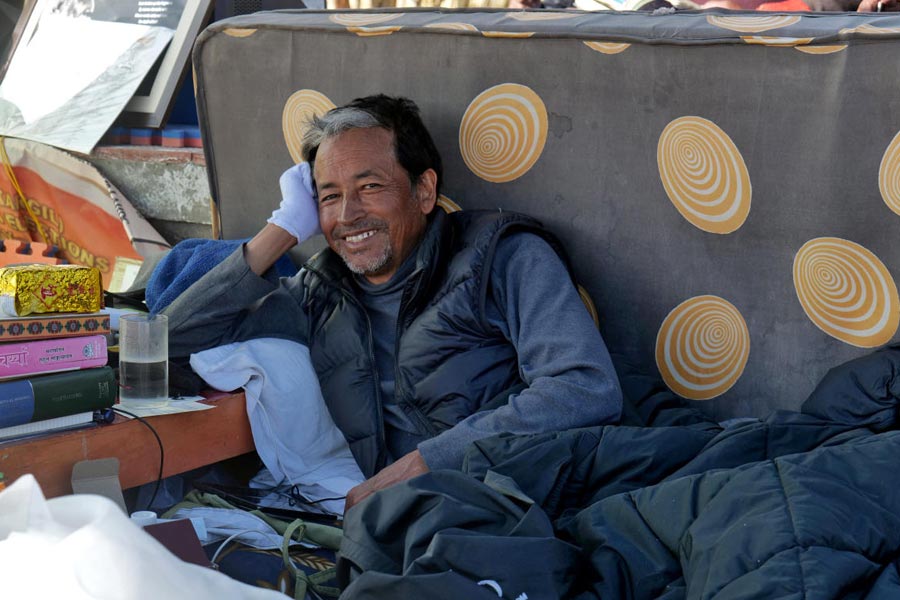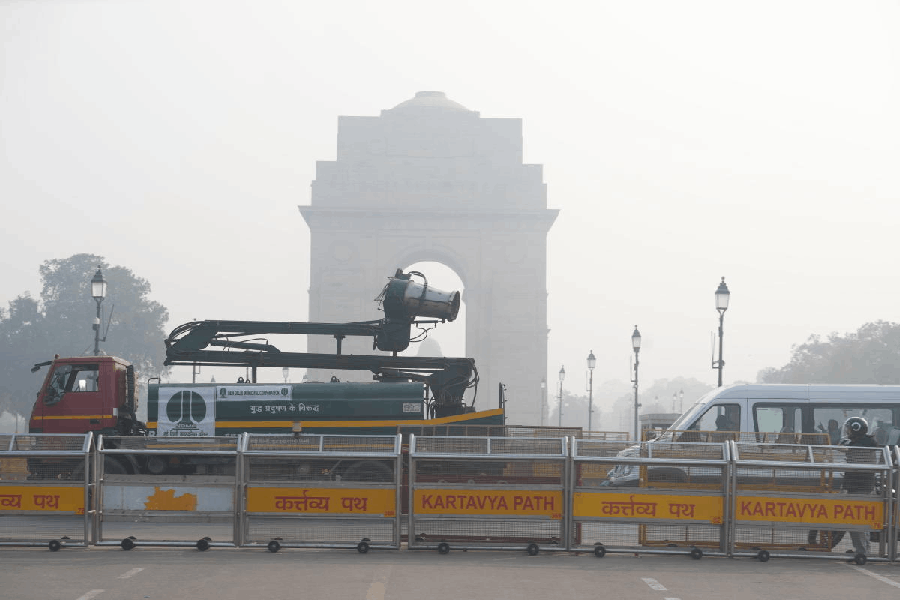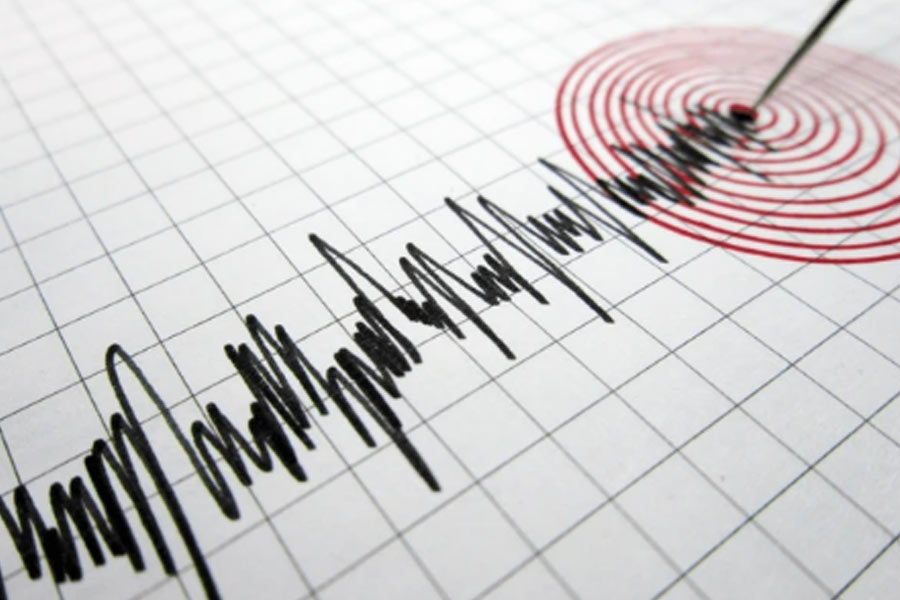|
|
The best way to begin to understand India, I sometimes think, is to observe the cow. Once, while waiting for the Howrah-bound Doon Express in Benaras, not unpleasantly numbed by the odour of shit that fills the air the moment one crosses into Bihar and never quite goes away, I had my bovine moment — a cow epiphany. The train was obviously going to be very late, and the light of dusk had arranged all the listless people on the platform into little tableaux of waiting. This is the moment when travellers give up fuming and become serene. Mothers relax their clutch on children, who are too tired now to be cranky and begin quietly to eat their snot. The men exchange fatalistic jokes and grim anecdotes about delayed journeys. The loudspeakers are quiet, and even the vendors are in a stupor. A dark film begins to form on the syrupy tea.
Suddenly, I see a young, delicate cow entering the platform. It is in another dimension of time. There is a spring, a gentle blitheness, in its step. Its head bobs up and down in rhythm with its walk. Looking perfectly contented and comfortably alone, it moves, straight and sure, down the platform, close to the edge, ignoring everything on the ground it might have picked up to munch. Then, quite unaccountably, it swerves right towards a tea-stall next to which, with his back to the cow, a man is standing. He is a defeated-looking, middle-aged north Indian in a dhoti and white kurta, possibly a bachelor, drinking his tea and staring abstractedly into nothing. The cow walks straight up to him, and then dips its head down and pushes its healthily wet snout straight through the man’s dhoti into the cleft of his bottom, where the legs fork out, and gives him a tender little nuzzle. His hand, about to bring the tiny plastic cup of tea to his lips, freezes in mid-air. And, for about two seconds, his face is fixed in an expression of the strangest bliss. He has never before been touched like this, and he allows himself, for those two seconds, to like it — to like it intensely and with a shamelessness he hadn’t thought himself capable of.
But normalcy returns very soon. He swivels around, and discovers that the source of his brief pleasures is a cow. It is now looking undemandingly up at him, without any misgivings. He shoos it off, and it trots away up its original path, exactly like before, as if the little interlude had never happened. The man looks about him quickly and settles back into his old, tea-drinking posture. Yet, I thought, perhaps his life — his secret life — has changed forever, even without his knowing it yet. Was there not, or was I imagining it, the merest hint of a wistfulness on his face now, where there used to be only the glaze of an unexamined life, before the cow picked him for its
twilight whimsy, in that hour when cows are supposed to go dustily home? Perhaps Manto, though definitely not Premchand, would even have written a story about this man, unremarkable for most of his life, but now cow-changed.
Nietzsche had once observed that cows, “grazing as they pass you by”, are “neither melancholy nor bored”. This is because they exist in an eternal present: “they do not know what is meant by yesterday or today”. To the philosopher, this is a kind of “happiness” that is founded on the capacity to live without memory and hope, a difficult condition for human beings to contemplate without envy: “A human being may well ask an animal: ‘Why do you not speak to me of your happiness but only stand and gaze at me?’ The animal would like to answer, and say: ‘The reason is I always forget what I was going to say’ — but then he forgot this answer too, and stayed silent: so that the human being was left wondering.”
Nietzsche is meditating here on the “uses and disadvantages of history for life” — the second of his Untimely Meditations, published in 1874. For him, the cows grazing on the fields, living “only by rumination and ever repeated rumination”, are a perfect image of how “animals live unhistorically” (his emphasis). To the fatally historical human consciousness such a condition is like “a vision of a lost paradise”. But isn’t Nietzsche talking here about those mind-numbingly picturesque German or Swiss cows, so neatly fenced away from human life, with their hand-crafted bells, furry good health and nursery mooing, the ones that occasionally jump over the moon and look droll on boxes of cheese and chocolates?
Indian cows, with their sublime capacity to be always in the way, are creatures of pure presence. With their milk and urine and spittle and dung and divinity, they are intransigently historical creatures that have the power to change the very pace of history as it is lived and created every day on the streets. They exist in the midst of life, and of death, and yet form, for those who might stop to look, islands of stillness, opacity and mystery — often in the garb of supreme inconvenience — that are wholly other than human. To meet the blankness of their large-eyed stare is to be held in a gaze that is impossible to ‘understand’ in human terms. What is the nature of their ‘consciousness’ of the human, and of their ‘interest’ in it? Or are these words relevant at all? Yet those big, beautiful eyes make one want to read into them all kinds of human, inward qualities: wisdom, pathos, kindliness, indifference.
In the midst of the chaos and movement of urban and provincial life, Indian cows effortlessly demand and achieve the suspension of time. I saw a cow once, standing perfectly still for hours, balanced on the narrowest of road dividers on Nai Sadak, one of the busiest streets in Benaras, with one front leg elegantly lifted, like a lady lifting her foot to let the maidservant sweep under it. All around the cow was the wild sound of thousands of cycle-rickshaws ringing their bells, which, in north Indian towns on a very hot day, feels like insanity and a sun-stroke happening together deep inside one’s head. The cow stood, marooned in that madness and very much part of it, yet serenely transcending it too, like those finely painted floating cows by Manjit Bawa, but without their air-conditioned unearthliness.
In Benaras, I have also noted moments of silent communion between cows and parked motor-bikes. Very often, a cow would slowly move towards one, and then take its face very close to that of the bike and allow its long horns to get intimately entangled with the handles, brakes and mirrors of the bike. Looking at a cow and a bike locked together like this, nose-to-nose, the mystical union of slowness and speed, it might even occur to one that, in Benaras, cows become bikes and then change back into cows again, and that they sometimes dimly remember their bike-lives and recognize them as kindred forms.
Years ago, in a desolate hotel in Kottayam, I had once seen an unforgettable photograph in the local paper. It was of a cow and its dead calf — a bovine pietà. The caption said that the calf had been knocked down by a bus, and the cow had stood by the body for hours, until it was removed. There was something classical, in the highest sense of the word, about this photograph. These bone-white, absolutely expressionless, beautifully minimal forms — one alive but motionless, the other stilled by death — had been transfigured by photography into an image, or a moment, that seemed to exist somewhere alongside ancient sacrifice, Stoic tragedy and Classical sculpture. Something like “the illusion of a Greek necessity”, as Aeschylus or Racine had known it, had turned these dumb, wayside creatures into figures of an unspeakable pathos — in the midst of the human, yet fundamentally other than human.











